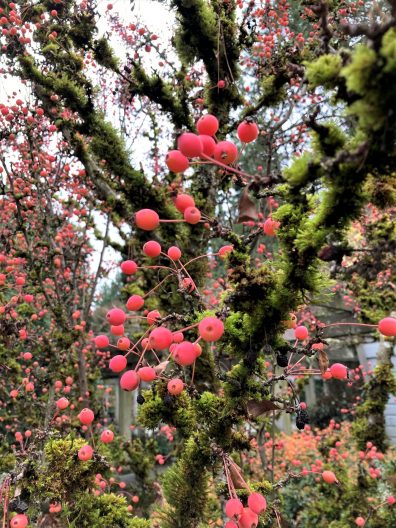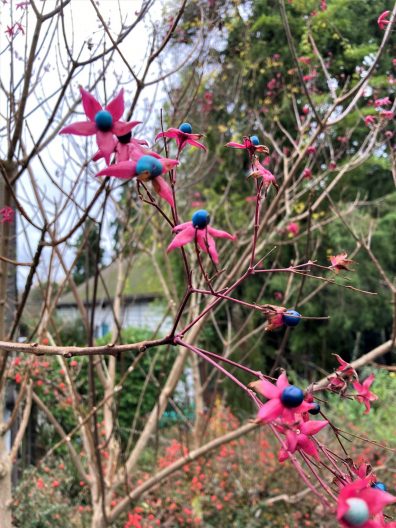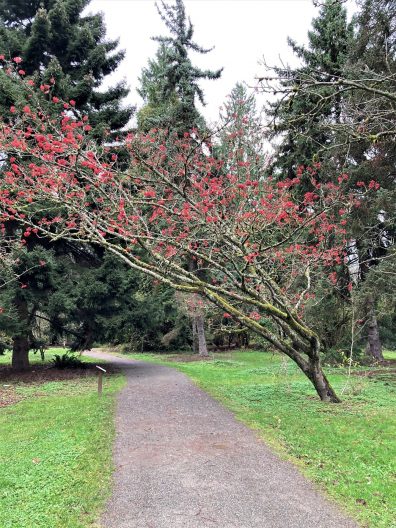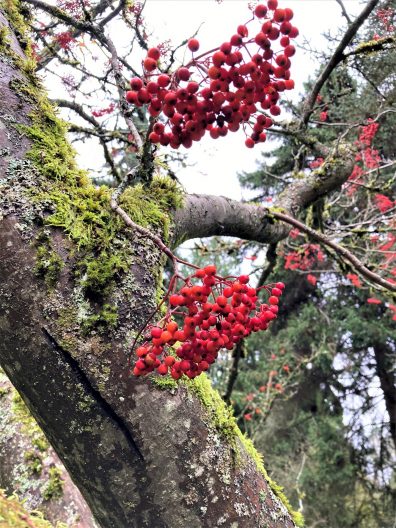A Berry Colorful Winter Beginning
1) Malus ‘Adirondack’ Adirondack Crabapple
|
|
|
- A small deciduous, sun-loving tree with multi-seasonal interest.
- Mass amounts of dark pink buds open to form large fragrant white blossoms in late spring as new foliage emerges.
- After flowering, it becomes heavily laden with seemingly glowing, pink, cherry-like fruit which last well into winter.
- Rightfully so, this stunning little tree has received the “Award of Garden Merit” from the Royal Horticultural Society.
- Find our exceptional specimen (pictured) outside of the Graham Visitors Center near the restrooms.
2) Clerodendrum trichotomum Harlequin Glorybower
|
|
3) Sorbus commixta Japanese Rowan, Japanese Mountain Ash
|
|
|
- Native to east Asia, this small-to-medium tree grows in a rounded form and usually matures at a height of 15-25 feet, but has been recorded (on rare occasion) as being nearly 60 feet tall.
- Green pinnate leaflets change to a deep purple or red in the fall.
- Following the small white early summer flowers, bright red-orange pomes begin to develop and fully mature after leaf drop.
- This species is located on the north end of our Sorbus collection.
4) Euonymus europaeus ‘Atrorubens’ Spindle Tree
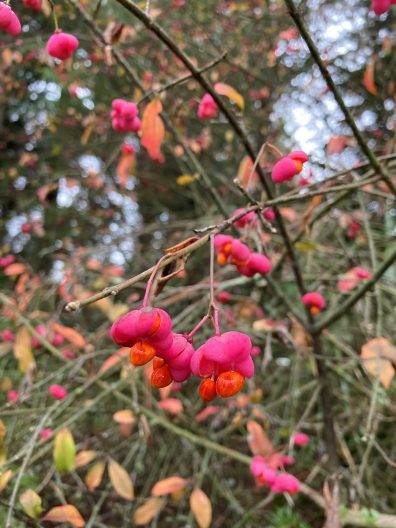
Shea Cope
- This large shrub/small deciduous tree prefers woodland borders and can tolerate a fair amount of shade.
- It is well known for its showy red fall color.
- Insignificant small yellow flowers emerge in late spring which transform into incredibly showy pink sepals and orange fruit later in the fall.
- A small grouping can be found just north of our Coulter Pine collection in the Pinetum.

